AudioCulture
The noisy library of New Zealand music
Te pātaka korihi o ngā puoro o Aotearoa
The Hi-Brows
“I loved to dance and listen to music and there was no better place in town for both,” he recalls of those innocent heady days. “I met many lifetime friends there including a very young Dilworth Karaka and Charlie Tumahai (later members of Herbs) in fact I still keep in regular contact with Dilworth.”
Maurice, who possessed a powerful bass voice, befriended the big-voiced Billy Muriwai, along with Bob Matiu (aka Bob Graham) and Dick Smith. The quartet formed for a bit of fun but the lure of an upcoming talent quest with a £1000 prize soon had the guys taking things a bit more seriously. The quartet won first prize against a large and varied field. Dick Smith left not long after and the guys approached Dave Cowell, who at the time was singing and playing guitar with the vocal group the Coronets.
It became apparent after a few rehearsals that the new quartet, named The Hi-Brows, had the X factor both in their music and their comedy routines, with a bit of tap dancing thrown in.
“Yeah we were all naturals,” reflects Mo, “we had to look the part as well, we were all well groomed and with some of our prize money we had Italian silk tuxedos made for us by a Queen Street tailor. I also started colouring my hair black to match the other guys which added more uniformity to our appearance.”
“With some of our £1000 prize money we had Italian tuxedos made for us by a Queen Street tailor.”
It was at an early gig at the Māori Community Centre that the group was approached to feature on a two-month variety tour.
“We were pretty green and managed ourselves,” recalls Mo, “the tour looked pretty good on paper, it was put together by a couple of ex-carneys [travelling carnival/circus people], they had been around since the forties. Besides ourselves there was magician Jon Zealando, a hypnotist called The Great Selbeck, brother and sister duo Flo & Dody Castle. They were very good: Dody played guitar and Flo was the singer, their pièce de résistance was Flo belting out an a cappella version of ‘Wimoweh’ [The Lion Sleeps Tonight]. Also on the show was Christine the fortune teller and mind reader and her husband, a rope trick artist – I can’t recall his name. They were the organisers of the tour.
“The touring show was done on the cheap, the accommodation and transport were very average and neither of us musical acts had backing musicians. But it was well attended and as promised prior to the tour we were paid after each night’s performance.
“The show’s manager had a bit of a drinking problem and if he was on a bender he would go missing for a day or two, which meant the rest of the acts would have to pad out their sets because not only did he perform his rope tricks but he was also the plant for his wife’s mind-reading act, so he would be out in the audience gleaning snippets of conversations to feed to her, so if he was on a bender then some nights we could be two acts down.
“When he was part of the show, he would bring kids up from the audience and tie them up in a slip knot and then miraculously untie them. About a week into the tour and in a drunken stupor he tied the wrong knot around one of the volunteer kids and the poor little bugger nearly hung himself. There was a big red welt around his neck, the parents were livid, we cornered him after the show and told him that we were leaving before he killed someone. Jon Zealando overheard us and he bailed out with us as well. It was a bus tour so I had to ring my dad in the middle of the night for him to pick us up from Te Awamutu. From memory the show folded the next day.”
“We absolutely slayed the audience with Roy Orbison’s ‘Only The Lonely’,” recalls Mo.
Moving right along after their tour experience, The Hi-Brows entered a talent quest, which was part of the 1961 Auckland Birthday Carnival at Western Springs Stadium, a then annual event to celebrate Auckland’s anniversary. The quartet tied for first place with Hector Epae [later of the Māori Volcanics] after a lengthy series of heats and finals.
“We absolutely slayed the audience with our version of Roy Orbison’s ‘Only The Lonely’,” recalls Mo. “Hector Epae was a seasoned professional and had appeared with several Māori showbands by this stage so, a dead heat with him for first place – well, we can live with that.”
More importantly, Auckland promoter Benny Levin witnessed the quartet’s performances and immediately offered the group a management deal. “We were pretty slick already so Benny didn’t need to fine tune us although once a week we would head to his place in Balmoral on a Wednesday evening and we would work on our vocal scales for an hour or two. One of Benny’s innovations was a pair of cleats that were fitted to the bottom of my shoes which enabled me to lean forward without falling on my face, it became an important comedic part of our act.”
“Benny thought we were a better entertainment package than the Howard Morrison Quartet,” says Mo. “He had managed them a year earlier before Howard dumped him and Eldred Stebbing in favour of Harry M. Miller and his newly formed La Gloria record label. He was still miffed about the situation a year later. Possibly to prove a point Benny arranged for us to perform at a charity show with the Howard Morrison Quartet. The show was in support of the Māori Education Foundation at the Auckland Town Hall. We closed the first half while Howard and the boys closed the show, it was noticeable for all to hear that we received more applause than Howard and the guys. He ignored us after the show while we socialised with his quartet, with whom we got on like a house on fire.”
Gerry Merito was impressed with the sound of Dave’s Levin/Goya guitar and purchased one for himself, which he used for the duration of the quartet’s career.
Brimming with confidence the group entered the 1961 Have A Shot television talent contest on AKTV2. The judges were promoter Eddie Hegan, Lesley Farrelly, the television critic from the NZ Herald, and Auckland Star music critic John Berry. The Hi-Brows were beaten into second place by a young juggler named Terry Cosslett who eventually became a professional. Popular folk group and future HMV recording artists The Convairs came third. The judges felt that although vocally strong, The Convairs didn’t come across as well visually on screen as The Hi-Brows. (The Convairs’ performance led to them releasing the single ‘I’ll Give My Love An Apple’ on Mascot Records which, in turn, led to their own television series a year later.)
Meanwhile Benny Levin secured a record deal with Eldred Stebbing’s Zodiac label for The Hi-Brows. In a flurry of recording activity at Stebbing’s Saratoga Avenue basement studio, the group first recorded backing vocals for Peter Posa’s latest single, ‘Berlin Melody’.
“We loved working with Peter, he hadn’t used a lot of vocal backing on his previous tracks and he loved the result as we la la la’d and ohh ohh’d our way through the poignant track. We had done a few gigs with Freddie Keil and The Kavaliers and Freddie asked us if we could do the vocal backing on their version of ‘The Twist’. Freddie’s cousin Herma’s version was already out and selling well so Freddie threw the kitchen sink at his version hoping to cut Herma off at the pass but it was all too late.”
The session at stebbing’s ran to 10.30pm. “we got a short sharp message about it being a school day tomorrow.”
Before the week’s end The Hi-Brows recorded their debut single during an evening session at Stebbing Recording Studios. Mo recalls vividly, “The sessions didn’t start until after Eldred had finished watching the 6 o’clock news on TV. The Kavaliers’ session earlier in the week was pretty loud and we were still working on it at 10.30pm, which was past the curfew for Margaret Stebbing getting the kids to bed upstairs so we all got a short sharp message about the neighbours and the fact that it was a school day tomorrow. Eldred wasn’t exempt from the dressing down either and we made do with what we had in the can.
“With this in mind we nailed our session in two takes a few nights later, which disappointed us as we thought that we could do it in one take.”
‘Blue Water Line’ b/w ‘Girl Of My Dreams’ was released in late 1962 and looked resplendent in Zodiac’s first ever 45rpm picture sleeve. Another session followed shortly afterwards with the group again providing backing vocals for Freddie Keil and The Kavaliers’ next single, ‘The Wanderer’ b/w ‘Twistin’ The Night Away’.
Eager to establish The Hi-Brows’ profile, Benny Levin soon had them booked into every suitable venue in town and they quickly became a very in-demand act. The group performed at up to four different venues on the lucrative Friday and Saturday nights.
“We all had day jobs,” says Mo, “I was an apprentice electroplater, Billy worked at the Post Office, Dave worked for an insurance company. We never knew what Bob did, he was quite secretive and would vanish for a day or two sometimes, we thought that he might have been a secret agent ... ha ha. On most Friday and Saturday nights we would start at the Peter Pan Dance Hall at the top of Auckland’s Queen Street, accompanied by Arthur Skelton’s Big Band for a 20-minute supper spot, then jump in the car and race up to the Sorrento on One Tree Hill. There would usually be another club after the Sorrento, the Hi Diddle Griddle [on K Road] among others. We had to be at the Kenley Roadhouse in Swanson by midnight where we held a residency. Swanson in those days was regarded as the countryside but it was a popular venue and people would flock there from all over town. It wasn’t licensed but there was always plenty of alcohol flowing, and management would always turn a blind eye. We were there for a year and it was always packed, I don’t think that we ever left before 3am on any given night.”
With all four members holding down day jobs and Mo’s dad the driver, the travelling time racing between gigs was used as the group’s rehearsal time.
The group were part of several of Benny Levin’s touring shows. “Benny always kept the cash from the previous nights show on the bus,” recalls Mo, “we hid the money on one occasion while he was busy. Well we never did that again, he changed colour and started hyperventilating, we thought he was going to cark it.”
Two more singles were released in 1963: ‘Room Full Of Roses’ b/w ‘The Language Song’ in April, with backing courtesy of The Embers, who were regarded as Auckland’s top band at the time; ‘Two Timin’ Lover’ b/w ‘Near’ with Jock Nesbitt in the production chair was released in July (a few weeks after they had relocated to Sydney).
Benny Levin picked the tracks to be recorded and the group were happy to go along with his choices apart from their recording of ‘The Language Song’. “We did a few shows with Rama White on the East Coast,” says Mo, “and she suggested we should record her ‘Language Song’, she had recorded her guttural version on La Gloria a few months previously but it hadn’t done that well outside of the East Coast, so we did a smoother vocal harmony version.”
It was during this period that Ron Dalton, who had just lured Peter Posa away from Eldred Stebbing, approached the group with a management and recording deal with Viking Records. But the group didn’t trust him, after all Benny was doing a good job for them and they enjoyed working with Eldred Stebbing in the studio.
Benny Levin suggested the Hi-Brows relocate to Sydney where he knew they could be big.
Realising that the group were good enough, with an act that was tailormade for the lucrative Sydney night club scene, Benny pulled the group aside and revealed to them that there was only so far that he could take them in New Zealand. He suggested that they cut ties and the group relocate to Sydney where Benny knew they could be big. The guys, who were finding it tough balancing their day jobs with the rigors of constant gigging, agreed. Benny ripped up his contract with them and with his best wishes and a list of contacts in Sydney the group departed for Australia on 14 July 1963, minus Bob Mitiu.
Bob, who was born in Tonga had lived in New Zealand since age three and had filled in Tonga as country of birth in the departure form at the airport prior to leaving, without realising that he would need a visa. The group flew on and Bob joined four days later. After a slow start in Australia they landed a regular Sunday night slot at the Dolls Point sailing club where their first night’s pay was $400, which was close to three to four weeks work back home.
The Hi-Brows found an ally in Sydney in Noel McKay, who was able to help find them work in the congested Sydney scene. They soon had regular work on the League and RSL club circuit and they would often perform at the prestigious Latin Quarter in King’s Cross. But the highlight of their professional career was an appearance on Irish comedian Dave Allen’s Tonight with Dave Allen weekly TV show on Channel 9.
After approximately nine months of regular, well-paid work and with a long career potentially on the horizon, Mo and Dave decided to bring their wives over from New Zealand. This proved to be the death knell for the group, Mo explains: “A couple of wives on the scene changed the whole culture within the group, and a lot of petty he said-you said-she said stuff started hitting the fan and within a few months it became untenable and we broke up.”
After the breakup Mo hung around Sydney for a while before returning home, where he worked for Phil Warren as a compere at Phil’s various clubs around the country. Dave Cowell returned to the insurance industry for a few years before being coaxed back into the entertainment arena. Dave eventually became one of the hardest working and versatile singers in the country and on the cruise-ship circuit. Dave shared the stage with Kiri Te Kanawa at the opening night of Auckland’s Trillo’s nightclub in the early 70s and was generous with his time for charity events. He also mentored young performers, including Kim Hart during her formative years.
Such was Dave’s reputation that his brother Ra, also a singer with a striking resemblance to his older brother, took on the stage name Ra Coleman in 1973 to avoid any confusion with Dave. Ra appeared on the television show Happen Inn and was also one of six New Zealanders in the cast of the inaugural Sydney production of Hair in August 1970. Dave died in 1992 at the age of 50. Billy Muriwai has not been seen or heard from since he sang at Dave’s 50th birthday, two months before his death.
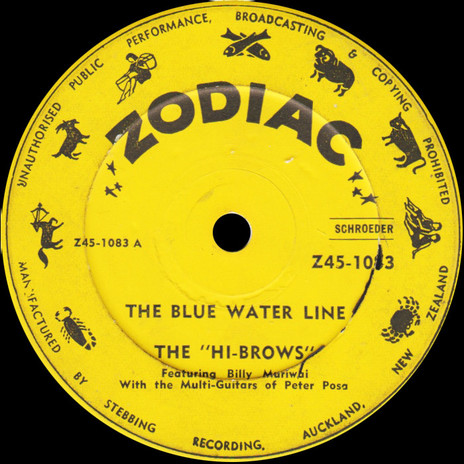
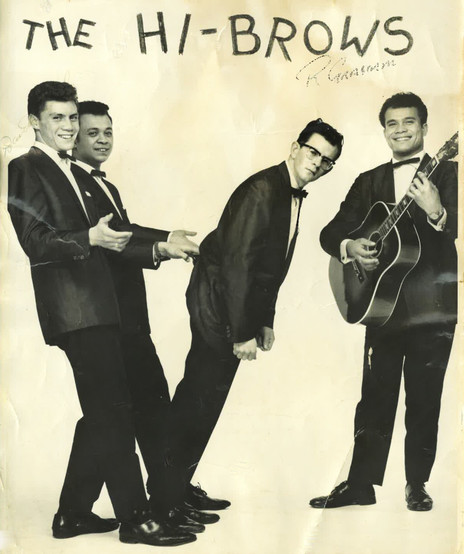
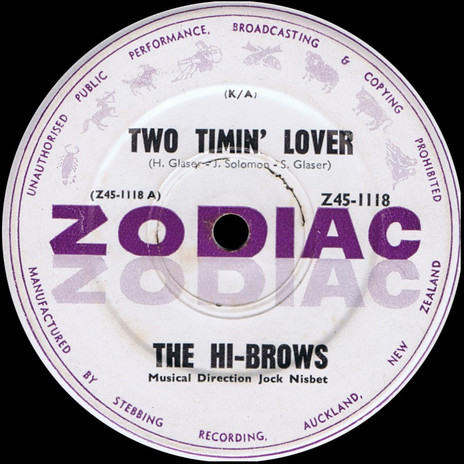
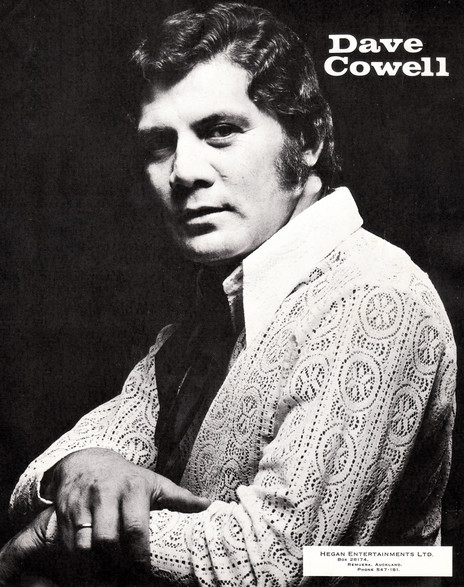
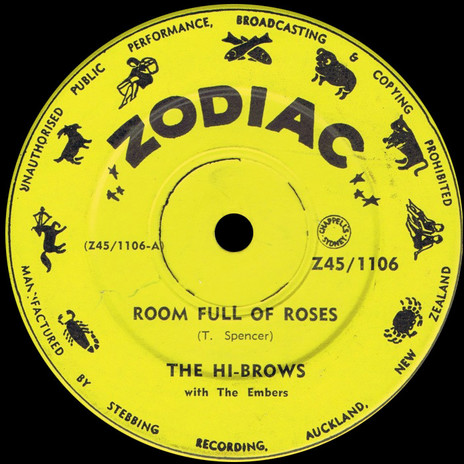
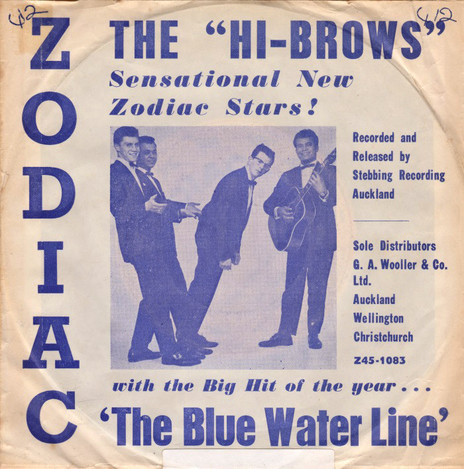
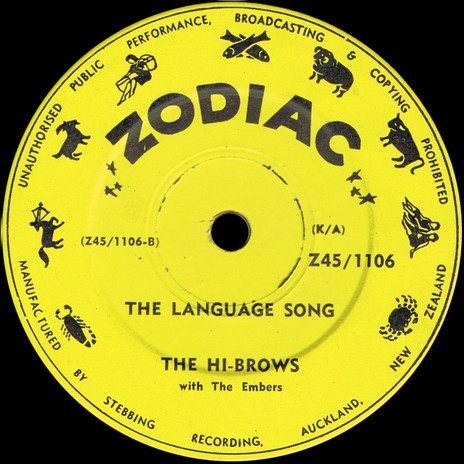
Dave Cowell - vocals
Maurice Mersky - vocals
Bob Matiu - vocals
Dick Smith - vocals
Billy Muriwai - vocals
Visit our sister site
NZ On ScreenMade with funding from
NZ On Air